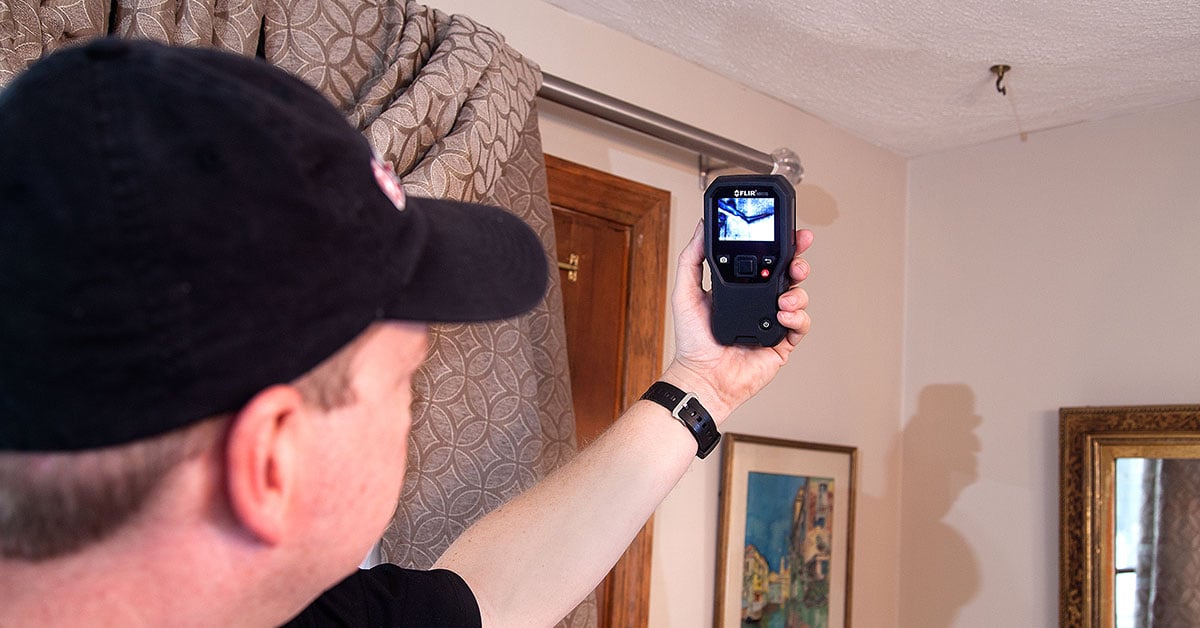The article listed below about Locating water leaks is definitely enlightening. You should give it a look.

Early detection of dripping water lines can reduce a potential disaster. Some little water leakages may not be visible.
1. Analyze the Water Meter
Every home has a water meter. Inspecting it is a surefire manner in which assists you find leaks. For starters, shut off all the water resources. Make sure no one will purge, utilize the faucet, shower, run the washing equipment or dishwasher. From there, go to the meter as well as watch if it will alter. Considering that nobody is utilizing it, there should be no motions. That suggests a fast-moving leak if it relocates. If you discover no changes, wait a hr or two and inspect back again. This means you might have a slow-moving leakage that could even be below ground.
2. Examine Water Usage
Analyze your water expenses and also track your water consumption. As the one paying it, you need to discover if there are any kind of disparities. If you identify sudden changes, despite your usage coinciding, it means that you have leakages in your plumbing system. Remember, your water expense need to fall under the exact same variety on a monthly basis. An unexpected spike in your bill suggests a fast-moving leak.
At the same time, a steady boost each month, despite having the exact same behaviors, shows you have a slow leak that's likewise gradually rising. Call a plumber to completely examine your home, specifically if you really feel a cozy location on your floor with piping underneath.
3. Do a Food Coloring Test
30% comes from bathrooms when it comes to water usage. Examination to see if they are running effectively. Drop specks of food color in the container and also wait 10 mins. If the color somehow infiltrates your dish throughout that time without flushing, there's a leak in between the container as well as dish.
4. Asses Exterior Lines
Don't forget to inspect your outside water lines too. Test faucets by attaching a yard pipe. Ought to water seep out of the connection, you have a loose rubber gasket. Change this and also make sure all connections are limited. If you've obtained a sprinkler system, it will assist get it professionally examined and preserved annually. One little leakage can throw away lots of water as well as surge your water expense.
5. Examine and Examine the Situation
Home owners should make it a behavior to check under the sink counters as well as also inside cupboards for any kind of bad odor or mold development. These two warnings indicate a leak so timely focus is needed. Doing regular examinations, even bi-annually, can save you from a major issue.
Much more significantly, if you recognize your home is already old, maintain a watchful eye on your heating systems, pipes, pipes and so on. Look for stainings and also damaging as most pipes and also home appliances have a life span. They will likewise normally weaken as a result of tear and also put on. If you believe dripping water lines in your plumbing system, don't await it to escalate. Call a professional plumber today so you do not wind up with a dreadful mess in your house.
Early discovery of dripping water lines can mitigate a possible disaster. Some small water leakages may not be noticeable. Examining it is a guaranteed means that helps you find leakages. One little leakage can lose bunches of water and surge your water expense.
If you suspect leaking water lines in your plumbing system, do not wait for it to intensify.
WARNING SIGNS OF WATER LEAKAGE BEHIND THE WALL
PERSISTENT MUSTY ODORS
As water slowly drips from a leaky pipe inside the wall, flooring and sheetrock stay damp and develop an odor similar to wet cardboard. It generates a musty smell that can help you find hidden leaks.
MOLD IN UNUSUAL AREAS
Mold usually grows in wet areas like kitchens, baths and laundry rooms. If you spot the stuff on walls or baseboards in other rooms of the house, it’s a good indicator of undetected water leaks.
STAINS THAT GROW
When mold thrives around a leaky pipe, it sometimes takes hold on the inside surface of the affected wall. A growing stain on otherwise clean sheetrock is often your sign of a hidden plumbing problem.
PEELING OR BUBBLING WALLPAPER / PAINT
This clue is easy to miss in rooms that don’t get much use. When you see wallpaper separating along seams or paint bubbling or flaking off the wall, blame sheetrock that stays wet because of an undetected leak.
BUCKLED CEILINGS AND STAINED FLOORS
If ceilings or floors in bathrooms, kitchens or laundry areas develop structural problems, don’t rule out constant damp inside the walls. Wet sheetrock can affect adjacent framing, flooring and ceilings.
https://www.servicemasterbyzaba.com/blog/how-to-detect-water-leakage-in-walls/

I hope you enjoyed reading our section on Detecting hidden plumbing leaks. Thanks for taking time to read through our article post. Appreciated our entry? Please share it. Let another person discover it. Thanks for taking the time to read it.